Energy Savings Calculator: How LED Lighting Tubes Reduce Your Electricity Bills
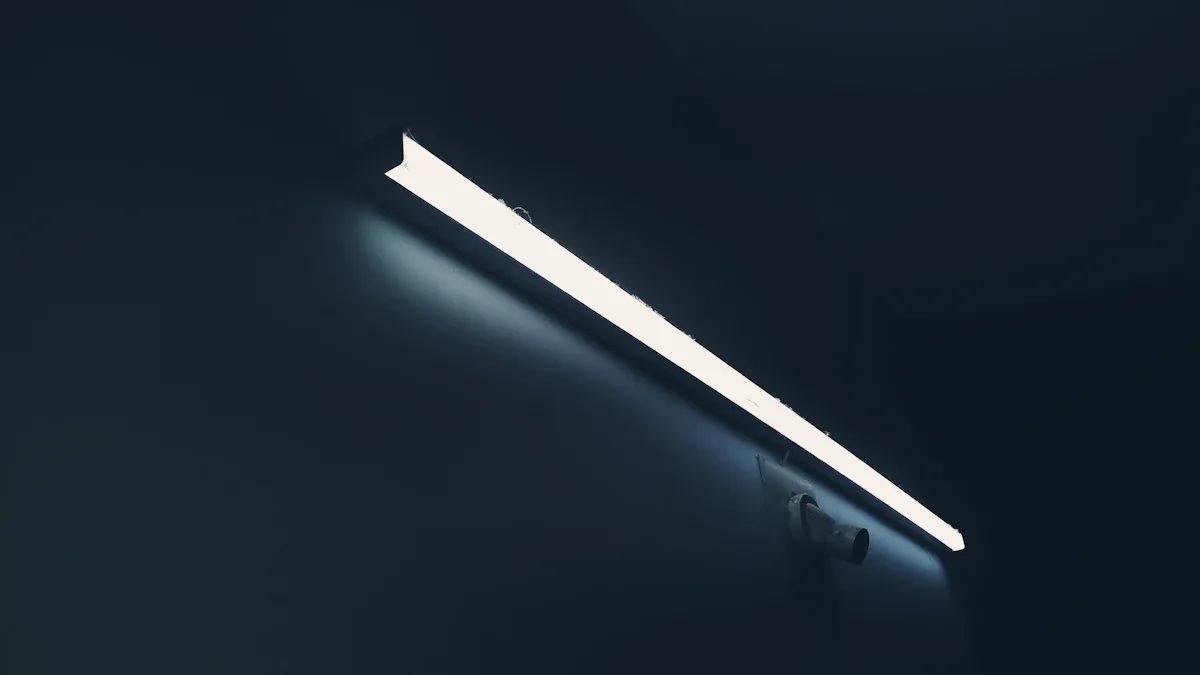
You want lower electricity bills, and switching to LED lighting tubes is a great option for energy savings. Many people see their bill climb each month and look for an energy efficient option. Lighting makes up about 4-5% of a typical Home electricity bill, costing around $6.46 monthly. LED lighting can cut your energy use by 70-80% and boost savings. Try the energy savings calculator. You only need basic data about your current light setup. The process is easy, and your savings can add up fast.
LEDs last longer than regular bulbs, lowering replacement costs.
Less heat from Led Light means more savings on cooling.
You can learn more on our About Us and Product pages.
Key Takeaways
If you use LED lighting tubes, you can use 70-80% less energy. This means your electricity bills will be much lower. - LED tubes last a lot longer than fluorescent bulbs. You will not need to replace or fix them as often. - An energy savings calculator can show you how much money you can save. It compares your current lights to LED lights. - LED lighting does not make as much heat. This can help lower cooling costs and make your energy use better. - Many utility companies give rebates for switching to LED lights. This makes it easier and cheaper to use energy-saving lights.
LED Lighting and Energy Cost Savings
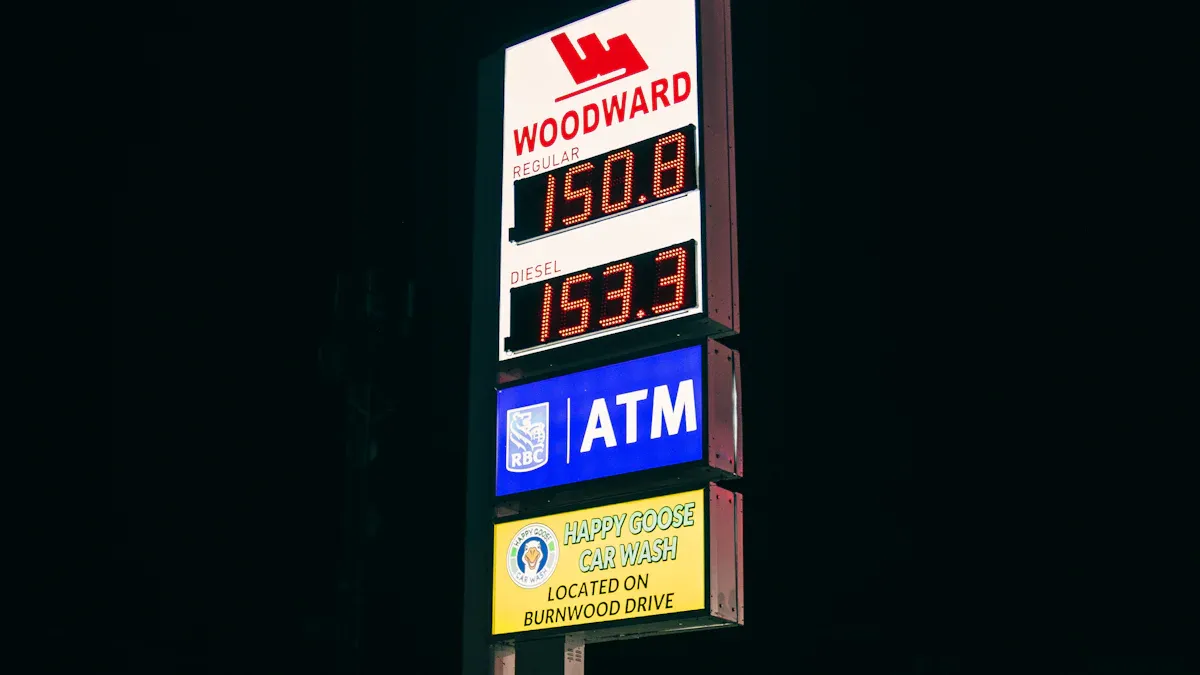
LED Lighting Efficiency
Switching to LED lighting tubes helps you save money. LED tubes use special technology to make more light with less electricity. For each watt used, LED tubes give about 130 lumens. Fluorescent tubes only give between 50 and 100 lumens. This means LED tubes are more efficient and use less energy.
A study from the University of Michigan found LED lighting is up to 44% more efficient than regular fluorescent tubes. Using LED lighting lowers your electricity bill every month. LED tubes also make less heat. Less heat means less wasted energy and lower cooling costs. This helps you save even more money, especially when it is hot outside.
Here is a simple table showing how bulbs use energy and make heat:
Bulb Type | Energy Converted to Light | Energy Wasted as Heat |
|---|---|---|
Incandescent | ~2% | ~98% |
Fluorescent | Higher than incandescent | ~15% |
LED | Highest efficiency | Minimal heat output |
LED tubes use 40-60% less energy than fluorescent tubes. You get the same brightness but pay less for electricity. In one year, you can save up to $225 on energy for a typical home. These yearly savings add up fast. LED retrofit projects are a smart way to cut energy use.
Lower LED Lighting Costs
LED lighting costs more at first than regular tubes. An LED tube costs between $10 and $30. Fluorescent tubes cost $2 to $10. But LED tubes last much longer. Most LED tubes work for 50,000 hours or more. Fluorescent tubes last about 15,000 hours. This means you replace LED tubes less often and pay less for maintenance.
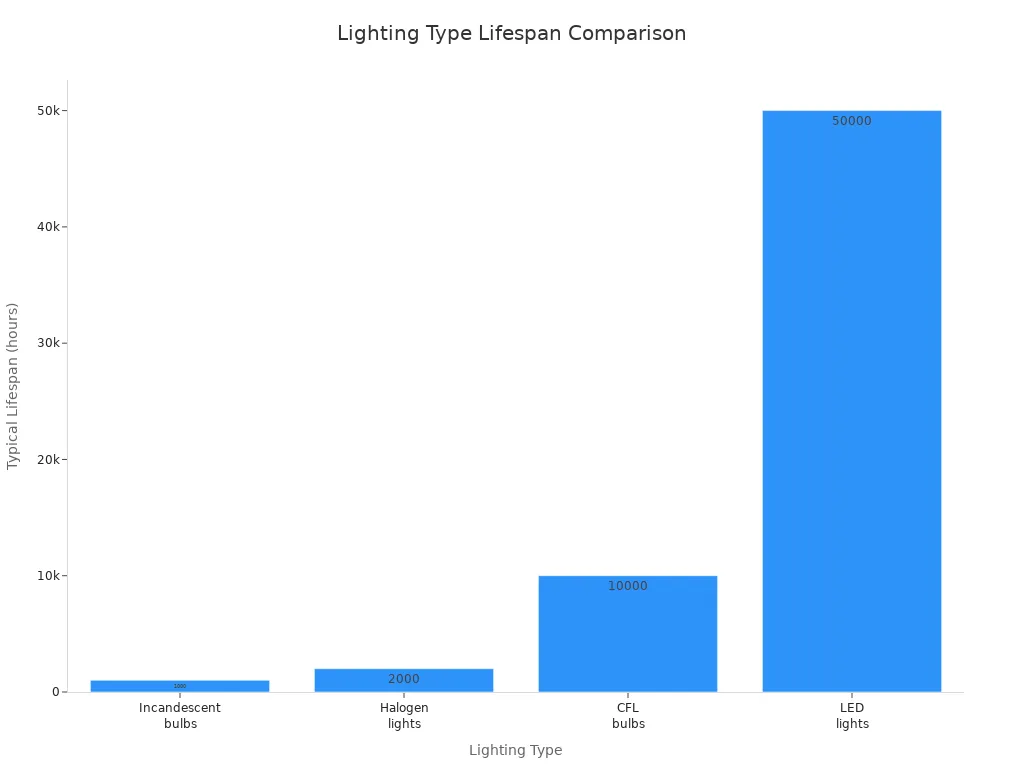
When you add up energy savings, less maintenance, and fewer replacements, you can save hundreds of dollars each year. Over five years, LED lighting saves you more than $240 compared to fluorescent tubes. Many people see their LED lighting pay for itself in about four years. After that, you keep saving money and your bills stay low. Choosing energy-efficient lighting helps you spend less, use less power, and make a smart choice for your home or business.
Energy Savings Calculator Overview
How the Calculator Works
You might want to know how much money you can save with LED lighting. The energy savings calculator helps you figure this out. This tool compares your current lights to LED lighting tubes. You type in things like wattage and how many hours you use the lights. The calculator tells you how much electricity you use now. It also shows how much you would use with LED lighting. You can see the difference in energy use and cost.
The main job of the energy savings calculator is to show how switching to LED lighting can lower your bills. It also tells you how much you can save on replacements because LED tubes last longer. Some calculators let you pick your location. This changes the electricity rate to match where you live. Your savings estimate fits your local utility costs. You get a clear idea of your total savings, including less maintenance and fewer new bulbs.
Tip: Try the led savings calculator to compare different LED products. You can find out which one saves the most energy.
What Data You Need
To figure out energy savings, you need some basic information. Here is a list of what you should have:
Number of light fixtures in your home or business
Wattage for each fixture you use now
Wattage for the LED lighting tubes you want to use
Hours per year you keep the lights on
Local electricity rate (cost per kWh)
Maintenance costs for changing bulbs
If you use fluorescent fixtures, check the ballast factor. This number helps you get a better energy savings calculation. Manufacturer specs and ballast factor data make your results more exact. Some led savings calculators let you enter your state or region. This sets the electricity rate for your area and makes your savings estimate better.
A good energy savings calculator can include maintenance, labor, and environmental benefits. You get a full view of your savings, not just lower bills. When you use the calculator, you can make smart choices for your lights and your budget.
Calculate Savings with LED Savings Calculator
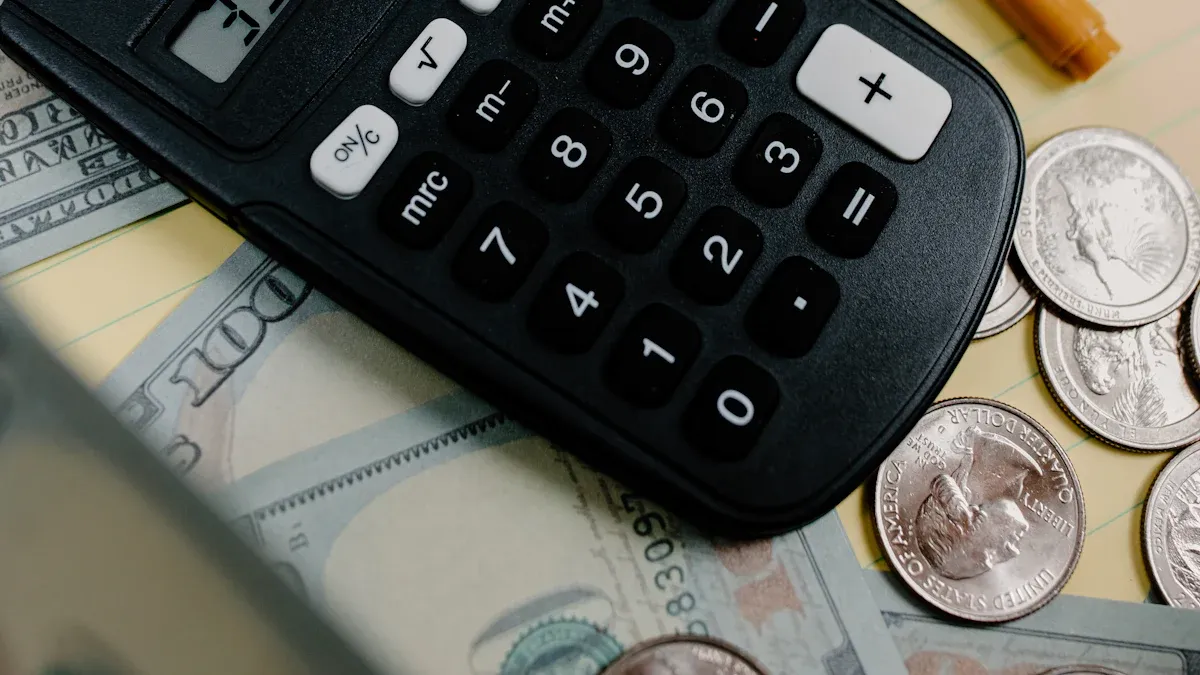
Gather Data
To start, you need to collect some important information. This step helps you get the most accurate results from the energy savings calculator. Here is what you should gather:
Find out how many light fixtures you have and the type of bulbs you use.
Write down the wattage of your current bulbs and the wattage of the LED lighting tubes you want to use.
Track how many hours per day you use your lights. Multiply this by the number of days in a year to get annual operating hours.
Look at your utility bill to find your electricity rate. Divide your total bill by the total kWh used to get the blended rate.
Add up any maintenance costs, such as labor or replacement bulbs.
Tip: Double-check your numbers. Overestimating the number of fixtures or forgetting to update your lighting plan can lead to mistakes in your energy savings calculation.
Enter Information
Once you have your data, you can enter it into the led savings calculator. Most calculators ask for:
Number of fixtures
Old and new wattage per bulb
Daily and annual hours of use
Electricity rate (cost per kWh)
Maintenance and replacement costs
Follow these steps to calculate energy savings:
Subtract the wattage of the LED lighting tube from your old bulb’s wattage.
Multiply this difference by the total number of bulbs and the annual operating hours.
Divide by 1,000 to convert watts to kilowatt-hours (kWh).
Multiply the kWh saved by your electricity rate to see your annual energy cost savings.
Add any maintenance savings for a full picture of your total annual savings.
Note: If you use dimmers or motion sensors, adjust your operating hours. This can increase your electricity bill savings.
Compare Results
After you enter your information, the led savings calculator will show you your results. You will see your energy savings, cost reductions, and return on investment. Let’s look at an example to help you understand how to calculate your light bill and compare traditional lighting to LED lighting.
Example Calculation
Suppose you have 100 fixtures, each with two fluorescent tubes (32 watts each). You want to switch to LED lighting tubes that use 15 watts each. You use your lights for 10 hours a day, 365 days a year. Your electricity rate is $0.1267 per kWh.
Calculate energy savings per tube:
Old wattage: 32W
New wattage: 15W
Savings per tube: 32W - 15W = 17W
Annual operating hours:
10 hours/day × 365 days = 3,650 hours
Annual energy savings per tube:
17W × 3,650 hours = 62,050 Wh = 62.05 kWh
Annual cost savings per tube:
62.05 kWh × $0.1267 = $7.86
Total annual savings for all tubes:
100 fixtures × 2 tubes = 200 tubes
200 × $7.86 = $1,572
You can see how quickly your savings add up. If you include maintenance and replacement savings, your total annual savings will be even higher.
Interpreting the Results
The energy savings calculator also shows your return on investment. Here is how you can use the results:
Look at your annual energy savings and total annual savings. These numbers show how much you save on your monthly light electricity bill.
Check the payback period. This tells you how long it takes for your savings to cover the price of your new LED lighting.
Review your return on investment. Use this formula:
ROI (%) = ((Annual Energy Savings - Initial Investment Cost) / Initial Investment Cost) × 100Consider any rebates or incentives. These can lower your upfront cost and improve your ROI.
Use the results to plan your lighting upgrade. You can see how much you will save on your electricity bill and maintenance over time.
Remember: Regularly review your lighting system and update your data if you change your layout or add new controls. This keeps your energy savings calculation accurate.
Here is a table showing a real-world example for a small retrofit project:
Calculation Step | Value | Explanation |
|---|---|---|
$4,000 | Cost for 100 LED bulbs including installation | |
Annual Energy Savings | $2,736 | $27.36 per bulb per year |
Annual HVAC Savings | $345 | $3.45 per bulb per year |
Annual Labor Savings | $2,586 | $25.86 per bulb per year |
Annual Material Savings | $1,389 | $13.89 per bulb per year |
Total Annual Savings | $7,056 | Sum of all savings |
Payback Period | 0.57 years | Total cost divided by total annual savings |
ROI | 76.4% | (Annual savings - cost) / cost |
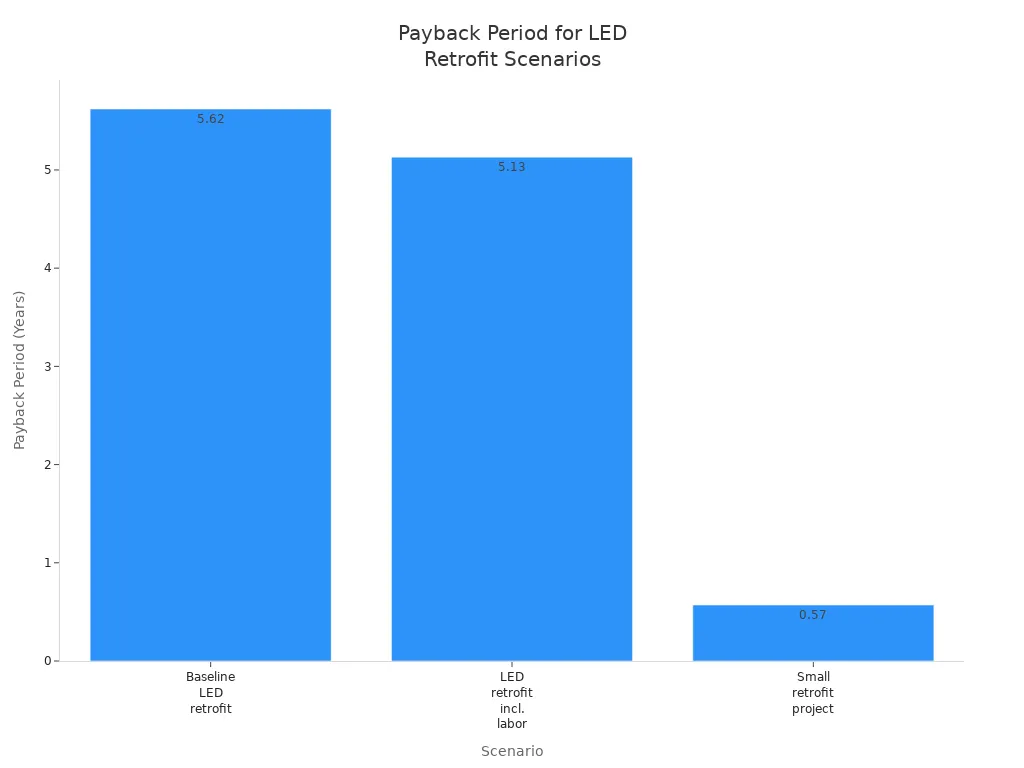
By using the led savings calculator, you can make smart choices for your home or business. You will see clear energy cost savings, a lower monthly light electricity bill, and a strong return on investment. This helps you plan for the future and keep your bills low.
More Benefits of LED Lighting
Maintenance and Replacement Savings
Switching to LED lighting gives you more than just lower bills. One big benefit is less work and fewer replacements. LED lighting tubes last much longer than old bulbs. Most LED tubes work for over 50,000 hours. Fluorescent tubes only last 10,000 to 15,000 hours. You do not have to change bulbs as often. This saves you time and money.
LED lighting tubes do not need to be replaced as much, so you pay less for labor.
You will not have to stop work as often in busy places like offices or schools.
LED tubes are tough and do not break easily.
You also do not need to fix the ballast, which saves even more money.
Businesses say that LED lighting helps them use their money and time better. They spend less on fixing lights and do not lose as much work time. Over the years, you save more because you buy fewer bulbs and pay less for repairs.
You can also get rebates and special deals. Many states and power companies give rebates to help you pick LED lighting. These rebates make the first cost lower and help you save more money in the long run.
Product Type | Average Rebate Amount |
|---|---|
LED Tube | |
2x4 Troffer | $33 per fixture |
Parking Garage Fixture | $94 per fixture |
HID Screw-in Bulbs | $53 per bulb |
Pole Lights | $98 per light |
Highbay Fixtures | $121 per fixture |
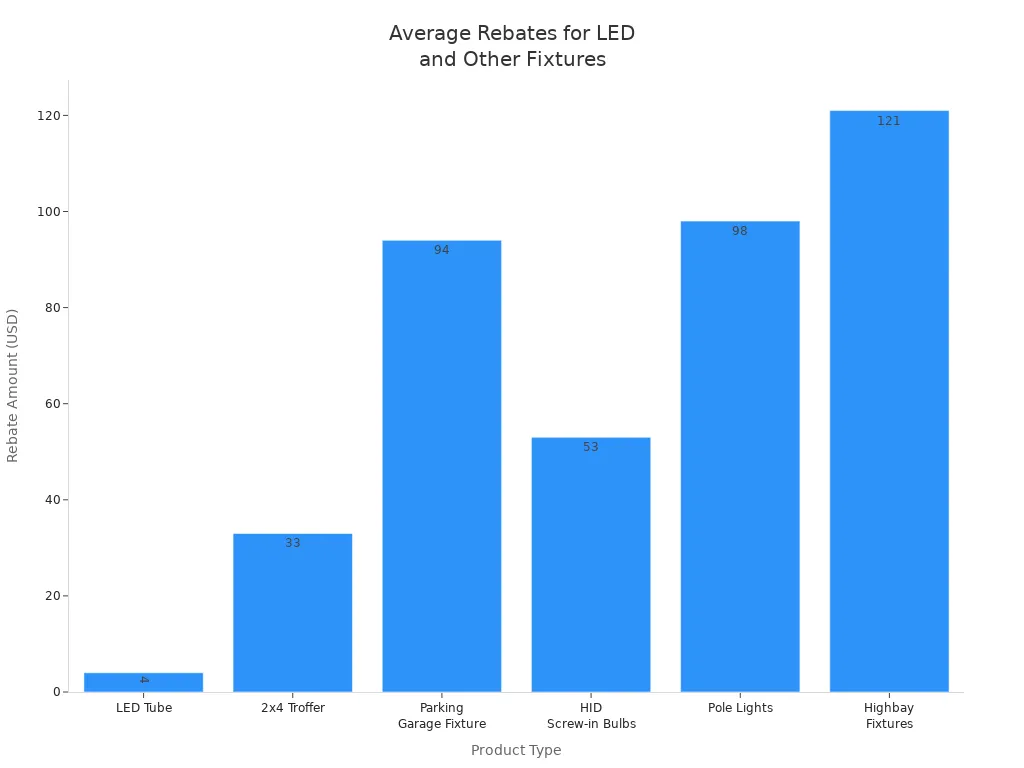
Tip: Check with your local power company for rebates before you buy new lights.
Environmental Impact
LED lighting is good for the environment and saves you money. These tubes use up to 80% less energy than old bulbs. Using less energy means less pollution. For example, switching to LED lighting can lower your building’s carbon footprint by thousands of pounds each year.
LED lighting turns almost all energy into light, not heat.
Using less energy means power plants make less pollution.
LED tubes do not have mercury or other dangerous stuff, so they are safer to throw away.
Because they last longer, fewer bulbs end up in the trash.
A university study found that LED lighting saved about 280,000 kWh each year. It also stopped 72 tons of CO₂ from going into the air. You also help your building get a better energy score. LED lighting helps you reach green building goals and keeps your space safer.
Aspect | LED Lighting Tubes | Traditional Incandescent Bulbs |
|---|---|---|
Energy Efficiency | Baseline (100%) | |
Annual CO2 Emissions | ~200 grams | ~1,600 grams |
Lifespan | ~25,000 hours | ~1,000 hours |
When you pick LED lighting, you help your wallet and the planet. You save money and help make the world cleaner and greener.
Switching to LED lighting gives you lots of good things. You save money on your electricity bill. You use up to 75% less energy. The bulbs last much longer than regular ones. LEDs also help the environment because they use less power. They do not have mercury inside.
Some main benefits are:
They use energy very well.
They last a long time.
They are tough and hard to break.
They are made to be good for the planet.
You can use an energy savings calculator. First, collect your information. Then, guess how much you will save. You will see how fast you get your money back. After that, look for rebates or ask a lighting expert. This helps you save even more.
FAQ
How do LED lighting tubes save you money?
LED tubes use less electricity than old bulbs. You pay less on your energy bill each month. They also last longer, so you buy fewer replacements. Over time, you keep more money in your pocket.
What information do you need for the energy savings calculator?
You need the number of fixtures, wattage of your current and new bulbs, hours used per day, and your electricity rate. Some calculators also ask for maintenance costs. Gather this data before you start.
Can you use LED tubes in any fixture?
Most LED tubes fit in standard fixtures. Some need you to remove or bypass the ballast. Always check the product label or ask a lighting expert before you install new tubes.
Are there rebates for switching to LED lighting?
Many utility companies offer rebates for LED upgrades. You can check with your local power company or visit their website. Rebates lower your upfront cost and help you save even more.
See Also
Complete Guide To Switching From Fluorescent Tubes To LEDs
Comparing LED Streetlights And Traditional Lights For Efficiency
Benefits Of LED Street Bulbs: Lifespan And Energy Savings

